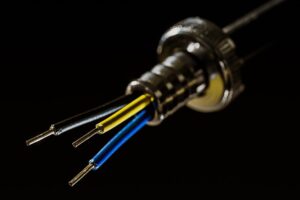Electrical wiring plays a crucial role in our daily lives, powering our homes and enabling the use of various appliances and devices.
One important component of electrical wiring is the neutral wire. However, there is a common concern among people about the potential for electrical shock from the neutral wire.
Yes, it is possible to get a shock from the neutral wire under certain circumstances. Typically, the neutral wire is considered safe as it carries the return current and is at a low voltage potential compared to the hot wire.
However, there are scenarios where the neutral wire can pose a risk of electric shock. One such scenario is when the neutral wire is improperly grounded or not grounded at all
In this article, we will explore the role of the neutral wire in electrical circuits, examine the causes of electrical shock, and discuss the risks associated with the neutral wire. We will also provide safety measures and precautions to ensure electrical safety.
Understanding the Neutral Wire
The neutral wire is an essential part of electrical circuits. It serves as a return path for electrical current, completing the circuit and providing a balanced flow of electricity.
Unlike the hot wire, which carries the current from the power source, the neutral wire carries the current back to the source, typically the electrical panel.
Electrical Shock and its Causes
Electrical shock refers to the sudden and unexpected flow of electric current through the body. It can cause injuries ranging from mild discomfort to severe burns or even death.
The primary causes of electrical shock include direct contact with live wires or faulty electrical equipment, exposure to high voltage, and poor grounding.
Electrical Shock Risks with Neutral Wire
While the neutral wire is generally considered safe, there are some risks associated with it that can potentially lead to electrical shock.
These risks include faulty grounding, improper wiring, and malfunctioning appliances. Faulty grounding can cause the neutral wire to carry electrical current, leading to potential shock hazards.
Similarly, improper wiring or cross-wiring can result in the neutral wire carrying current when it shouldn’t, posing a risk of shock.
Malfunctioning appliances, such as those with damaged insulation or exposed wires, can also create a pathway for current to flow through the neutral wire, increasing the risk of electrical shock.
Read also my article: Electrifying Insights: Does Your Electric Kettle Need Grounding?
Factors Affecting Electrical Shock Severity
The severity of electrical shock depends on several factors, including the current levels and the duration of exposure.
The human body’s resistance to electrical current plays a significant role in determining the impact of a shock. Higher current levels or prolonged exposure to electricity can result in more severe injuries.
Safety Measures and Precautions
To ensure electrical safety and minimize the risk of shock from the neutral wire, it is important to follow proper electrical installation practices. Some key safety measures include:
- Hiring a licensed electrician for electrical installations and repairs.
- Using electrical outlets and appliances correctly, following manufacturer guidelines.
- Avoiding DIY electrical work unless you have proper training and knowledge.
- Installing Ground Fault Circuit Interrupters (GFCIs) in areas where water is present, such as bathrooms and kitchens.
- Conducting regular electrical inspections to identify and address any potential hazards.
What to Do If You Get an Electrical Shock
If you experience an electrical shock, it is crucial to take immediate action to ensure your safety. Here are some steps to follow:
- Disconnect the power source by unplugging the affected appliance or turning off the circuit breaker.
- Check the person for any injuries and provide first aid as necessary.
- Seek medical attention, especially if the shock was severe or prolonged.
Conclusion
While the neutral wire itself is not typically a source of electrical shock, certain factors can increase the risks associated with it.
Understanding the role of the neutral wire and being aware of potential hazards is essential for maintaining electrical safety.
By following proper installation practices, taking precautions, and being vigilant about electrical maintenance, you can minimize the risks and ensure a safe electrical environment in your home or workplace.
Remember, electrical safety should always be a top priority to protect yourself and others from the dangers of electrical shock.


